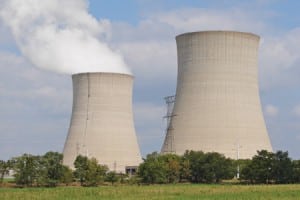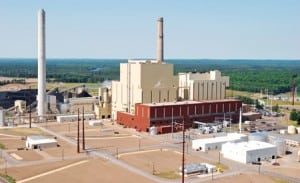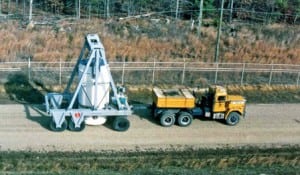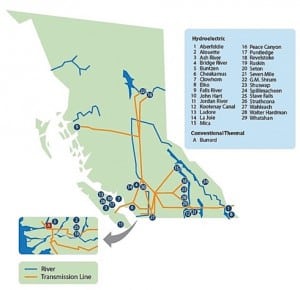Latest
-
Nuclear
Global Monitor (August 2008)
Australia considers seabed sequestration legislation / ElectraTherm installs its first commercial waste-heat generator / Mass. researchers achieve dramatic increase in thermoelectric efficiency / Nuclear power option for developing nations gaining steam / The great green wall of China / POWER digest / Correction
-
O&M
Focus on O&M (August 2008)
Assess your cooling tower’s condition / Proper technique for vertical-up stick welding / Move material with a sonic horn
-
Legal & Regulatory
Reality bites California GHG plan
The California Air Resources Board (ARB) recently issued its long-awaited draft Climate Change Scoping Plan (Draft Plan) for implementing Assembly Bill (AB) 32, California’s ambitious greenhouse gas (GHG) emissions-reduction initiative. AB 32 requires California to reduce GHG emissions to 1990 levels by 2020—roughly a 30% reduction in projected “business-as-usual” emissions levels or 168 million metric […]
-
Coal
Wisconsin Public Service Corp.’s Weston 4 earns POWER’s highest honor
Wisconsin Public Service Corp. placed its world-class Weston 4 into commercial service on June 30 and is now enjoying the benefits of coal-fired supercritical technology’s inherently higher efficiency, operating flexibility, and lower CO2 emissions. For its unequalled environmental protection credentials, well-integrated project team, and employing without a doubt the most advanced coal-fired steam generation technology in the U.S. today, Weston 4 is awarded POWER magazine’s 2008 Plant of the Year award.
-
Coal
Lamar Repowering Project’s creative melding of old and new wins Marmaduke Award
Lamar Light and Power is a municipal utility that has been generating the southeastern Colorado city’s electricity since 1920. Rising natural gas and oil costs pushed LL&P to retire its steam plant five years ago and begin hunting for more economic power sources. The answer: repower the existing plant with a state-of-the-art coal-fired circulating fluidized-bed combustor and cross-connect old and new steam turbines. The $120 million project will stabilize the region’s electricity rates for many years to come and is the winner of POWER’s 2008 Marmaduke Award for excellence in O&M—named for Marmaduke Surfaceblow, the fictional marine engineer/plant troubleshooter par excellence.
-
O&M
Condensate polishers add operating reliability and flexibility
Many of today’s advanced steam generators favor either an all-volatile treatment or oxygenated treatment chemistry program, both of which require strict maintenance of an ultra-pure boiler feedwater or condensate system. Those requirements are many times at odds with the lower-quality water sources, such as graywater, available for plant makeup and cooling water. Adding a condensate polisher can be a simple, cost-effective solution.
-
Nuclear
How to solve the used nuclear fuel storage problem
A familiar argument against building new nuclear power plants in the U.S. is that there’s no long-term solution to the used nuclear fuel storage problem. This situation was created in 1977 with the indefinite suspension of programs to reprocess commercial used nuclear fuel. The Global Nuclear Energy Partnership’s announcement in February 2006 that it was reconsidering the reprocessing of used nuclear fuel represented a major shift in policy. It may even open the door to building new U.S. nuclear plants.
-
O&M
Field application of compressor coatings saves big dollars
Over time, turbine compressors and other driven compressors suffer from corrosion, oxidation, and, in many cases, severe fouling, which in turn can cause in-service breakdown and premature overhaul. Today’s innovative protective coatings can be applied on-site to rotors and individual components to replicate the surface finish, corrosion resistance, and antifouling properties of new components.
-
Coal
Oh Canada! B.C. ratifies North America’s first carbon tax
British Columbia began collecting increased tax revenue on fossil fuels on July 1 with a promise to rebate those taxes through reduced income and business tax rates. This "revenue recycling" plan makes little progress toward the province’s goal to reduce CO2 emissions 33% by 2020, yet it is hailed by proponents as a legislative milestone. Others believe B.C. residents are victims of another governmental "bait and switch" program. Does it matter to the rest of the world?
-
Marmaduke
Marmaduke straightens a chimney
Steve Elonka began chronicling the exploits of Marmaduke Surfaceblow—a six-foot-four marine engineer with a steel brush mustache and a foghorn voice—in POWER in 1948, when he raised the wooden mast of the SS Asia Sun with the help of two cobras and a case of Sandpaper Gin. Marmy’s simple solutions to seemingly intractable plant problems remain timeless. This Classic Marmaduke story, originally published more than 40 years ago, illustrates that finesse often overcomes brute strength when solving delicate construction problems.










